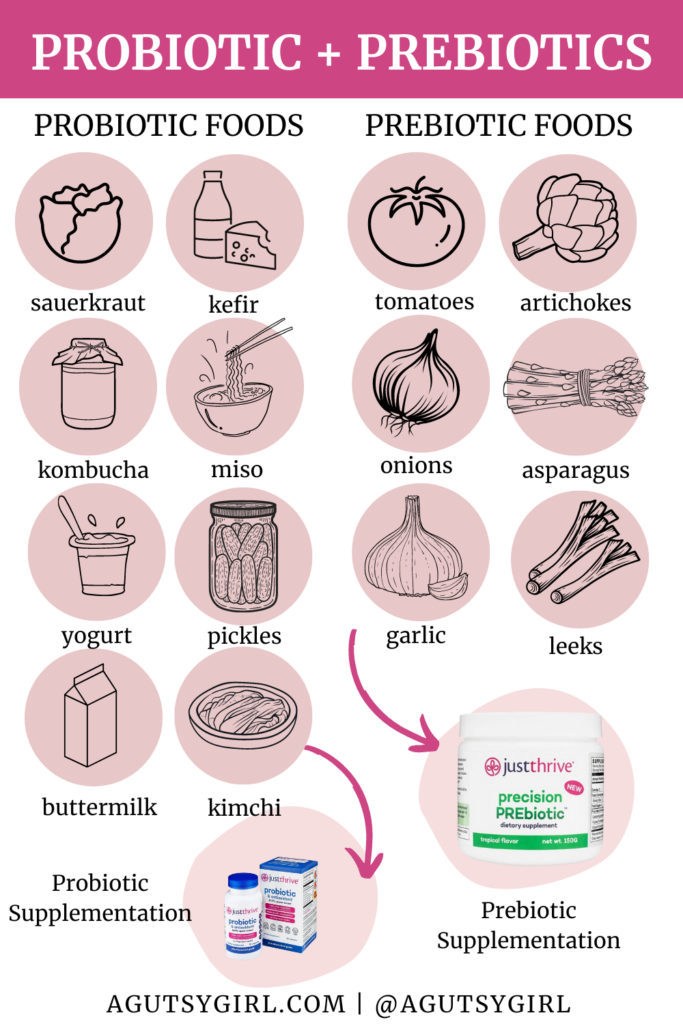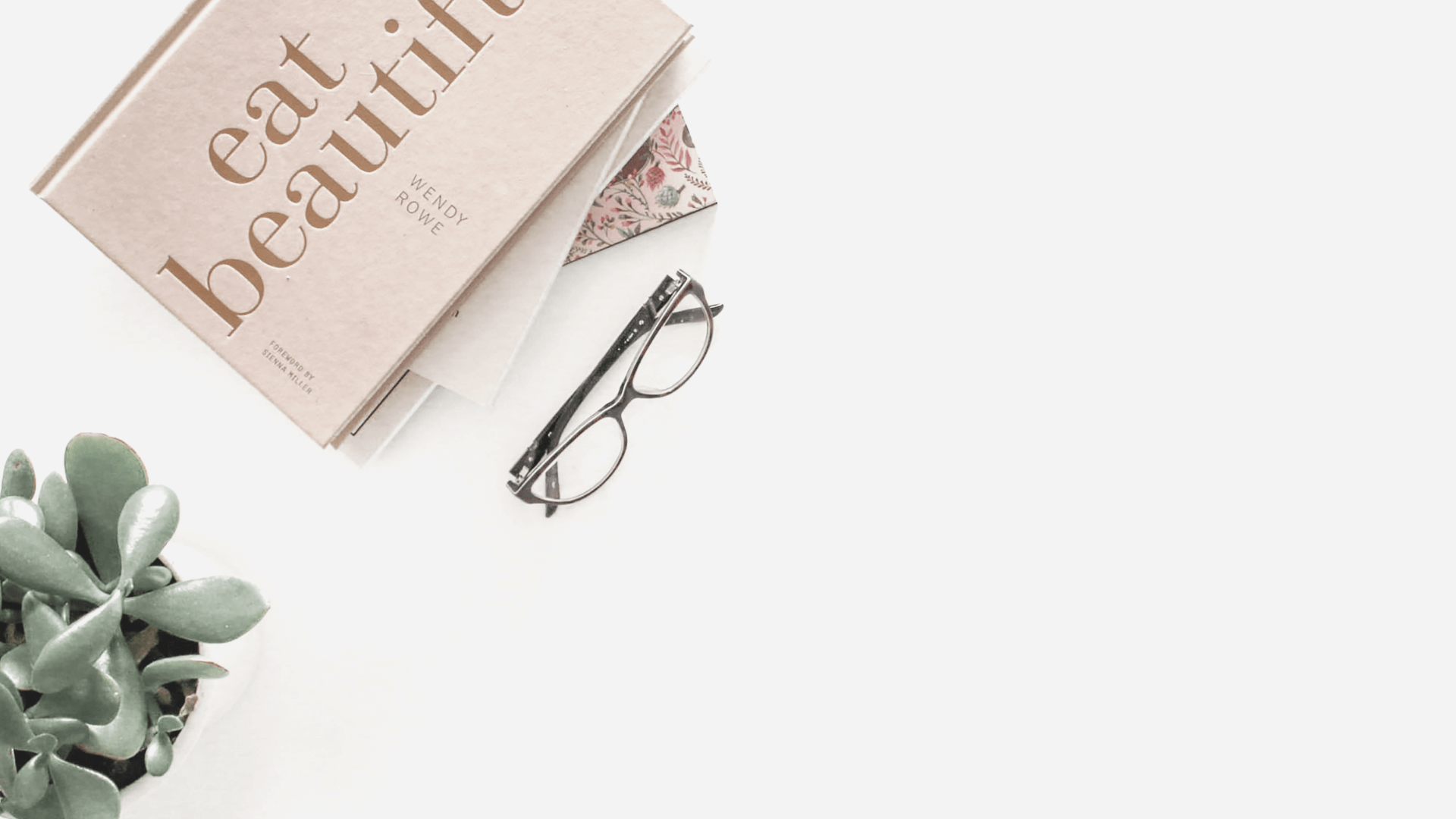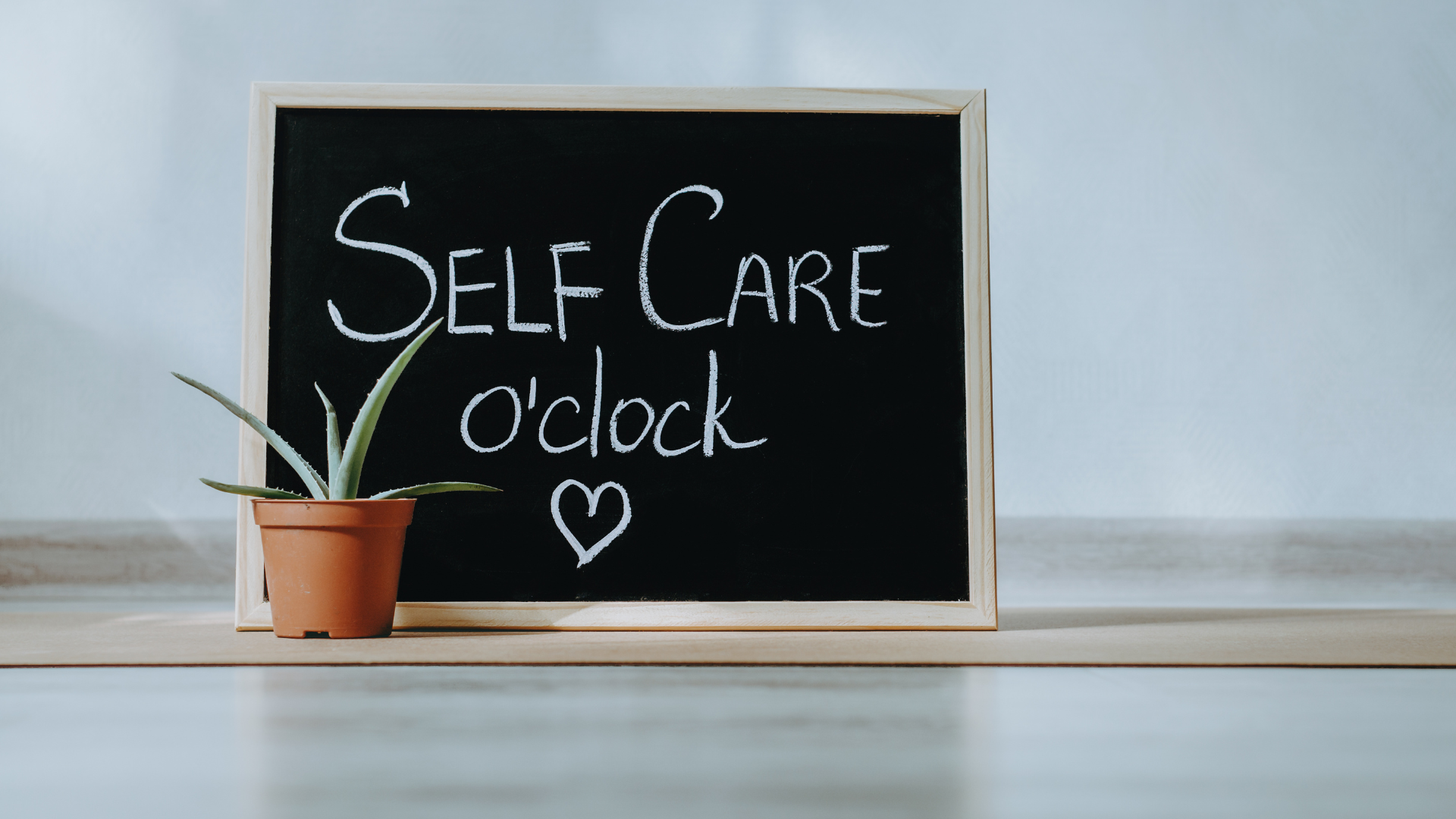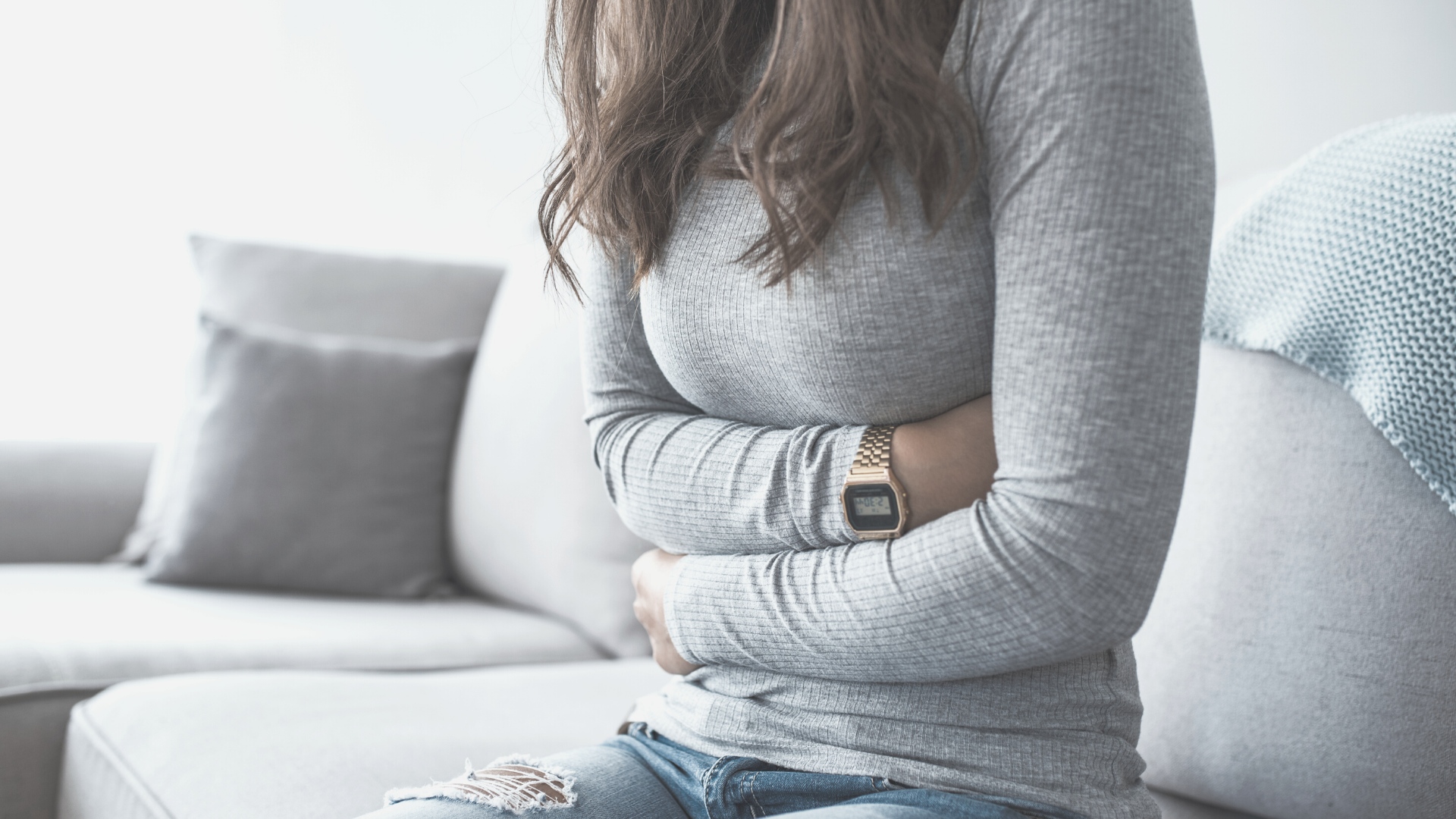After this post, you’re going to understand why butyrate foods are important + I’ll give you my butyrate food list.
The term butyrate means butter from the Latin word butyrum.
And using this word is not the first time you have seen it on A Gutsy Girl.
In fact, it wasn’t so long ago when I talked about it via a post I wrote, How to Build a Healthy Mucosal Barrier.
As it relates to butyrate, I said,
What do our beneficial bugs do with this fiber? They ferment it into short-chain fatty acids (SCFAs) like butyrate that provide energy and fuel for the cells that line our colon and facilitate tight junction assembly so our gut barrier can stand strong in the face of invaders. Butyrate also discourages temporary inflammation, letting our immune system know when it should and shouldn’t mount an attack. (source)
So with that, let’s dig into the topic more today.
p.s. NO ONE seems to care about Butyrate, but if you listen to THIS podcast episode on Food Sensitivities, you might care more!
Butryate: for Chronic Inflammation

According to the Cleveland Clinic, here are reasons for butyrate as they relate direction to the gut:
1. Reduce inflammation
Researchers have also linked low levels of butyrate to an increased risk of inflammatory intestinal disease and colorectal (colon) cancer.
2. Relieve gastrointestinal conditions
In one study, 66 adults with irritable bowel syndrome (IBS) who took a daily dose of sodium butyrate reported less abdominal pain. In another study, 9 of 13 people with Crohn’s disease reported improved symptoms after taking butyric acid every day for eight weeks.
3. Reduce Colon Cancer Risk
One laboratory study in human cancer cell lines found that sodium butyrate stopped the growth of colorectal cancer cells and caused cancer cell death (known as apoptosis). It’s also been shown to reduce damage caused by cancer or chemotherapy.
The importance of butyrate and the important role it plays on the gut microbiome and various health conditions is very clear.
Short Chain Fatty Acids
First, butyrate is a short-chain fatty acid.
And before we continue on with butyrate in particular, let’s break down a rough overview of short-chain fatty acids.
Short-chain fatty acids (SCFAs) are made by gut bacteria.
SCFAs, such as acetate, propionate and butyrate, are important metabolites in maintaining intestinal homeostasis.
I found this fantastic table from Atlas that gives a succinct breakdown.

SCFA
So how are SCFA’s even produced?
They are the end products of anaerobic bacterial fermentation in the gastrointestinal tract.
In other words, it goes like this:
- Indigestible polysaccharides such as dietary fiber and resistant starch are consumed.
- Short-chain fatty acids (SCFAs) are the main metabolites produced by the microbiota in the large intestine through the anaerobic fermentation of those indigestible polysaccharides.
The above are an interplay between what we eat and our gut microbiota.
Which brings us to answering the question,
What to eat for producing SCFAs?
The good news is that I have an entire butyrate food list to give you.
Butyrate Food List
Click HERE to save this butyrate food list for later.

17 Butyrate Foods for Overall Health
Let me make something clear. Some foods do contain butyric acid (see below), but there really aren’t butyrate foods. You won’t go to the grocery store and see “butyrate” on an ingredient label.
Instead, foods produce butyrate.
Now, something to know about butyrate is that it’s produced less than other SCFAs, and yet it’s vital for our health. Vital? Yes. Just refer to the table above showing these researched benefits:
- energy source for colon cells
- helps prevent leaky gut
- combats inflammation and cancer activity
- protects the brain
I’m not sure what you think, but all four seem super relevant for the Gutsy community and overall digestive health.
Again, there is no need to seek out foods high in butyrate, but instead focus on eating foods that feed the gut bacteria; our good bacteria in order to create an even stronger gut lining.
We have discussed this concept a million and five times. But remember, a food that feeds gut bacteria is called a prebiotic.
Here are 17 foods to increase butyrate production:
- almond (gf, grain, p, df, lf – up to 10 nuts – as shown in Reasonable SIBO, sf, v, GAPS, SCD)
- chickpea (gf, grain, df, lf – 1/4 cup canned, sf, v)
- apple (aip, gf, grain, p, df, v, GAPS, SCD)
- garlic (aip, gf, grain, p, df, sf, v, GAPS, SCD)
- asparagus (aip, gf, grain, p, df, lf – up to 1/2 spear, sf, v, GAPS, SCD)
- broccoli stems (aip, gf, grain, p, df, lf – up to 1 cup of the stems only, sf, v, GAPS, SCD)
- oat bran (gf – unless cross contamination occurs, df, lf – up to 2 tablespoons, sf, v)
- barley (df, only lf if it’s pearl barley and sprouted, sf, v)
- kiwifruit (aip, gf, grain, p, df, lf, v, GAPS, SCD)
- soy (all depends on what soy product in particular i.e. miso vs tofu vs tempeh, etc.)
- brown rice (gf, lf, sf, v)
- lentils (gf, grain, df, lf – up to 1/2 cup canned, sf, v, debatable – GAPS + SCD)
- peas (gf, grain, p – debatable, df, v, debatable – GAPS + SCD)
- cooked and chilled potatoes, resistant starch (gf, df, lf, sf, v)
- cooked and chilled white rice, resistant starch (gf, df, lf, sf, v)
- green bananas, resistant starch (aip, gf, grain, p, df, lf, v)
- plantain flour, resistant starch (aip, gf, grain, p, df, lf, v)
Note: the above, in parentheses, is the special diets key I try to include for you as often as possible. The intention for including it is that many people have been told by their practitioners to follow a specific gut-healing diet of sorts for better gut health.
And in this respect, I am always catering to you and only you in the gut healing community.
I hope you find it helpful.

Butyric Acid
And there’s more to know. Butyric Acid is what naturally occurs in some foods.
An example of these whole foods include:
- butter
- hard cheeses like parmesan
- milk (especially goat’s and sheep’s)
- yoghurts
- cream
- some other fermented foods (e.g. sauerkraut, pickled cucumbers, and fermented soy products)
However, and this is critical to know, the amount of gut health benefits you receive from the above foods, mostly dairy products, is very small and insignificant, increasing butyrate levels by only small amounts.
Go ahead, eat them if you like as the cherry on top of that cake.
But make sure the 17 fiber-rich foods above are the focal point.

Butyrate Supplements
If you want to supplement in order to produce butyrate, find a good resistant starch and/or prebiotic.
My personal favorite is the Just Thrive Prebiotic.

You can save 15% off the Just Thrive Prebiotic with my code AGUTSYGIRL at checkout.
A note from AGG: This post was updated in mid-2023, about a year after I launched my own supplement line at guthealingsupplements.com.
Because of the ongoing research I do for ways to increase beneficial bacteria and reducing overall intestinal inflammation, I am confident that adding a butyrate-specific supplement to the supplement line is highly desirable.
IF you would be interested in this, too, please comment on this post below or send me a private email (admin @ agutsygirl.com).
Sodium Butyrate
If you do some researching on the crucial role butyrate plays, you’ll also likely stumble upon ‘sodium butyrate,’ which is found via supplementation.
In fact, here is another fact stated from the Cleveland Clinic, directly related to the digestive system:
A sodium butyrate supplement may help with irritable bowel syndrome (IBS), diverticulitis and Crohn’s disease.
So what exactly is sodium butyrate?
In a Frontiers study, they analyzed NaB (which is a salt of butyric acid) and its impact on gut microbiota as well as anti-tumor activity by describing molecular mechanisms.
Some highlights from the article:
- Butyrate is a key C4 SCFA with a wide range of beneficial properties. NaB, which is a salt of butyric acid, may open a new promising option and can be a potential strategy for colorectal cancer patients.
- Sodium butyrate (NaB), which is a salt of butyric acid, is characterized by a wide range of beneficial properties/activities. NaB has been investigated in case of several diseases, such as inflammatory bowel diseases (IBDs), non-alcoholic fatty liver disease (NAFLD), and obesity. During the last several years, an increasing interest in the effect of NaB usage in the context of colorectal cancer has been observed.
- The supplementation with NaB can beneficially affect gut microbiota.
Where Can I Buy a Sodium Butyrate Supplement?
If you are looking for a sodium butyrate supplement in particular, check out BodyBio: Butyrate + Sodium.
While there are many high-quality butyrate supplements, there are not a ton which are sodium-centric.
That being said, your overall goal should be on increasing butyrate-producing bacteria through high-fiber foods, resistant starches and prebiotic fiber vs. seeking out a butyrate supplement with sodium.
The right foods through a high-fiber diet is the first line of defense when it comes to increasing butyrate in order to minimize gut disorders.
By the way, if you’ve ever made my Gut Healthy Boosted Oatmeal Recipe, you’re already reaping the butyrate benefits.
Sources: HERE, HERE, HERE, HERE, HERE, and HERE.
So how can you know if the above might help you today? Well, try it out! In theory, everything above are things we should tolerate in order to help us thrive. That may or may not be you today.
There is only one way to know. Keep track of it! Download my 90-day PDF journal HERE or have us ship the beautiful, spiral-bound, 90-day journal directly to your doorsteps.
The journal key that’s included will help you with the how to.
If you liked this butyrate food list, you might also enjoy:
Xox,
SKH
🤰 bloating be gone! weight loss through optimal gut health for women
💃ʜᴇᴀʟ ʏᴏᴜʀ ɢᴜᴛ. ʜᴇᴀʟ ʏᴏᴜʀ ʟɪfe.
🫶🏻 founder gutbyome.com






